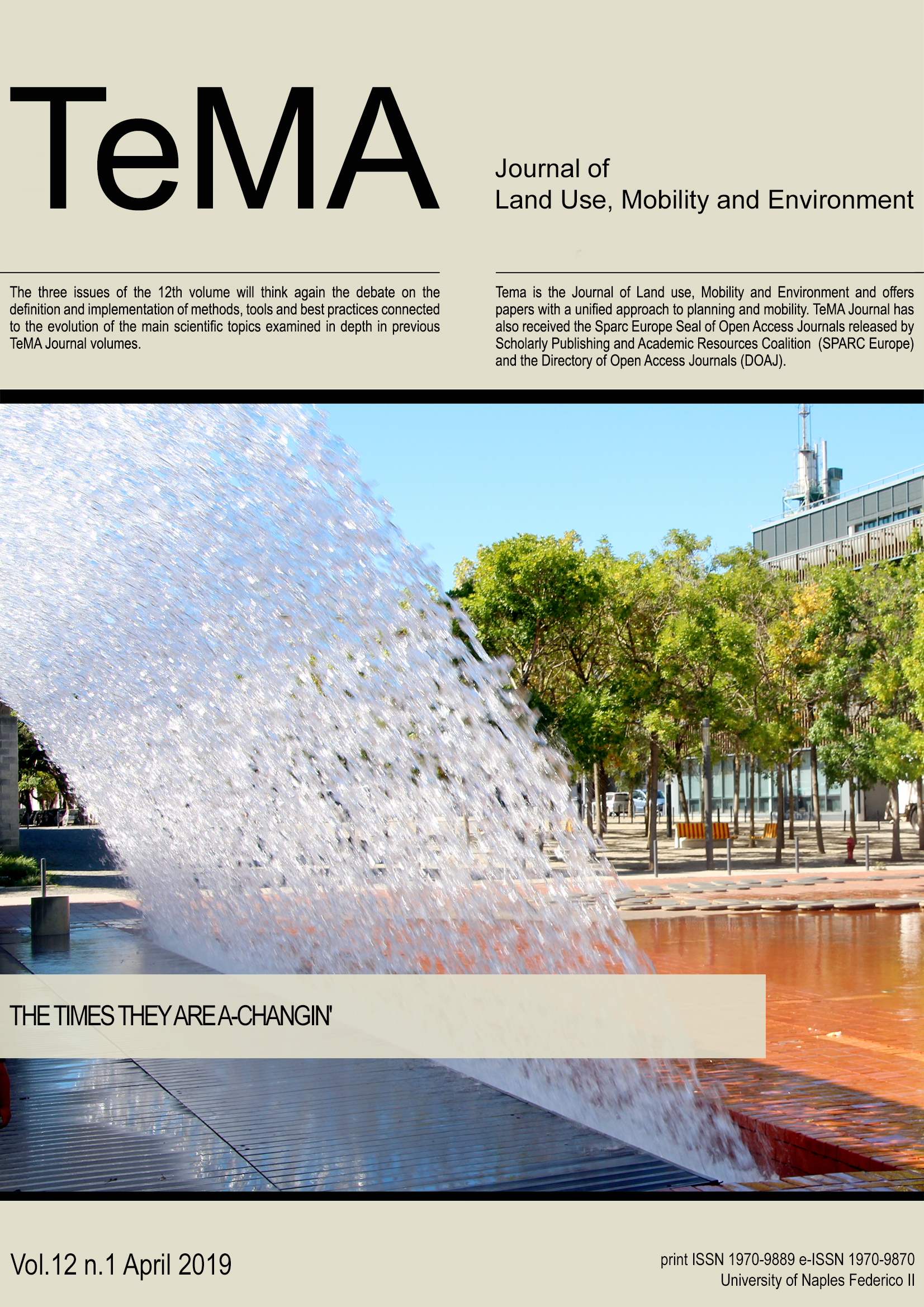Green is the colour. Standards, equipment and public spaces as paradigm for the Italian sustainable city
DOI:
https://doi.org/10.6092/1970-9870/5836Keywords:
DM 1444/1968, Public city, Urban equipment, Standard, ItalyAbstract
The speed of the urban systems is related with a series of social, economic, and environmental transformations bringing often to a critic state that needs the redefinition of urban elements and relationships, in order to guarantee quality and safety to the inhabitants’ lives. Related to the new spatial conditions of planning is the topic of urban equipment that is an open matter in the urban politics.
Their relevance for Italian cities made them a symbol of democratization and quality of the cities, due to the obligatory of minimum quantities of spaces for public services. The 50 years from the issue of DM 1444 allows to express a series of evaluations on the role of the public equipment in the processes of urban transformation and governance. Starting from this analysis, the paper proposes adequate and updated solutions in terms of evolution of the standards categories and their quantitative and qualitative characteristics, deepening the role of the urban facilities as potential sources of innovation.
The first part of the paper highlights some elements related to the long period of application of the law, and the results of this application in terms of increase and quality in the urban equipment of the city. The second part explores the motivations behind the need for a comprehensive updating of the subject, referring to concepts such as sustainability, and quality of urban systems. In the third part, starting from new requirements, new needs, new risks affecting urban systems, as well as from critical points of the Italian law structure, the paper proposes new categories of urban planning standards and the related functional requirements they must to satisfy.
Downloads
Downloads
Published
How to Cite
Issue
Section
License
Authors who publish in this journal agree to the following:
1. Authors retain the rights to their work and give in to the journal the right of first publication of the work simultaneously licensed under a Creative Commons License - Attribution that allows others to share the work indicating the authorship and the initial publication in this journal.
2. Authors can adhere to other agreements of non-exclusive license for the distribution of the published version of the work (ex. To deposit it in an institutional repository or to publish it in a monography), provided to indicate that the document was first published in this journal.
3. Authors can distribute their work online (ex. In institutional repositories or in their website) prior to and during the submission process, as it can lead to productive exchanges and it can increase the quotations of the published work (See The Effect of Open Access)


